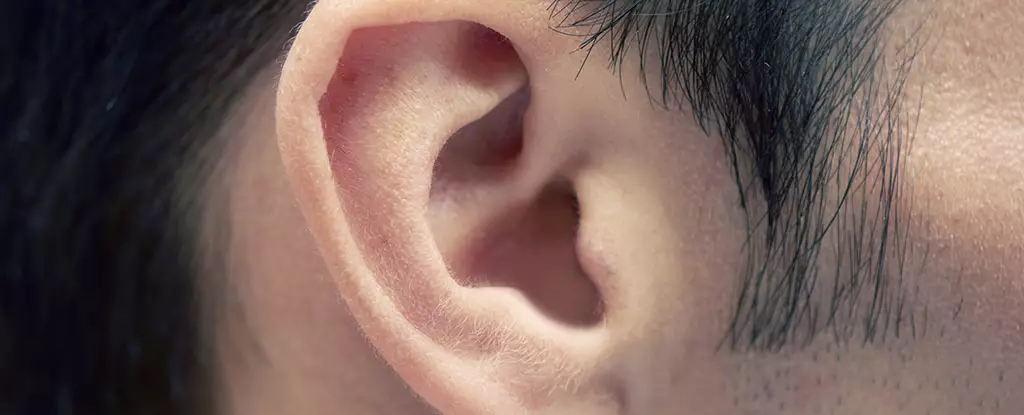Parkinson’s disease remains one of the most insidious neurodegenerative disorders, often hitting patients and their families with devastating consequences before a formal diagnosis is even possible. The relentless march of this disease, accompanied by motor dysfunction and cognitive decline, fuels an urgent need for earlier and more accurate detection methods. The recent proposal to use earwax, or cerumen, as a diagnostic window through the analysis of volatile organic compounds (VOCs) is undoubtedly innovative—but it’s a concept that warrants cautious optimism rather than unrestrained enthusiasm.
Why Earwax, of All Things?
On the surface, analyzing earwax for disease markers sounds almost counterintuitive, even unorthodox. However, the science behind this approach is intriguing. Parkinson’s disease alters the body’s biochemical landscape, including the secretion and composition of sebum, the oily substance that keeps skin and hair moisturized. While researchers have previously explored sebum’s altered scent profile as a potential indicator, its exposure to air and contaminants makes it unreliable for consistent clinical analysis. Earwax, by contrast, forms in the protected environment of the ear canal, sheltered from these external factors, offering a more stable reservoir of biochemical signals.
Nevertheless, the novelty of this approach is also its biggest weakness at this stage. Earwax isn’t exactly a commonly accessible or standardized medium for diagnostic purposes. The biology of cerumen, how it varies naturally between individuals, and the influence of factors like hygiene habits or environmental exposure has not been sufficiently explored to rule out confounding variables that could skew results.
Decoding VOCs: Early Signs or Mere Correlations?
The identified VOCs—ethylbenzene, 4-ethyltoluene, pentanal, and 2-pentadecyl-1,3-dioxolane—stand out as chemical suspects potentially linked to Parkinson’s pathology. It’s worth emphasizing that these are complex molecules possibly reflecting deeper biological processes such as inflammation and neurodegeneration. The discovery underscores a fascinating hypothesis: our bodies may emit subtle chemical “whispers” long before clinical symptoms arise.
Yet, beyond the excitement, one must ask: are these VOC changes specific enough to Parkinson’s, or might they overlap with other inflammatory or neurological conditions? The promise of a chemical fingerprint is alluring but requires diligent validation. Without robust replication across diverse populations and disease stages, generalizing these findings could inadvertently lead to misdiagnosis or false hopes.
The AI Olfactory System: A Double-Edged Sword
The introduction of artificial intelligence into the diagnostic mix is perhaps the most headline-grabbing aspect of this study. An AI olfactory system (AIO) trained to analyze VOC data yielded a striking 94.4% accuracy in discerning Parkinson’s cases from controls in the study sample. This level of precision is initially thrilling and hints at a future where bedside testing for Parkinson’s could become as simple as an ear swab coupled with AI-powered analysis.
However, the enthusiasm must be tempered by reality. The sample size—209 participants, with 108 diagnosed cases—is relatively small. AI models are notorious for overfitting in constrained datasets, meaning their impressive performance might not hold in larger, more heterogeneous cohorts. Furthermore, the complex interplay of genetics, ethnicity, disease stage, and environmental factors demands extensive, multi-center trials before this approach can gain clinical trust.
Implications Beyond Diagnosis
What this research thrusts into the spotlight is not solely a potentially faster diagnostic tool but also a gateway to unraveling Parkinson’s disease mechanisms. By identifying chemical shifts tied to neurodegeneration, scientists inch closer to decoding the disease’s origins and possibly intercepting its progression. For liberal-minded proponents of science-driven healthcare innovation, this aligns well with the ethos of early intervention and personalized medicine—a pathway that could reduce long-term societal and economic burdens.
Yet, we must not let technological fetishism distract from broader systemic issues. Parkinson’s diagnosis and care hinge just as much on accessible healthcare infrastructure, equitable participation in clinical trials, and addressing environmental factors that may contribute to disease prevalence. The study’s call for diverse cohorts and multiple clinical centers is an acknowledgment of this reality and rightly so.
Progress, Not Panacea
In summation, while the notion of diagnosing Parkinson’s disease from earwax VOCs analyzed by AI is a captivating glimpse into the future, it remains a nascent idea with significant hurdles. Until standardized protocols, larger population validation, and biological specificity are firmly established, this method should be viewed as a hopeful adjunct rather than a diagnostic revolution. Science thrives on bold ideas, but it also demands rigorous scrutiny—and here, the latter is paramount to avoid premature adoption or overdependence on an unproven technique. This study is a promising step forward, yet the journey toward practical, equitable Parkinson’s diagnostics continues, with much work left to do.

